November 25
Beginner Guide: How to Roast a Pig in a Meadow Creek Pig Roaster
4 comments
November 25
4 comments
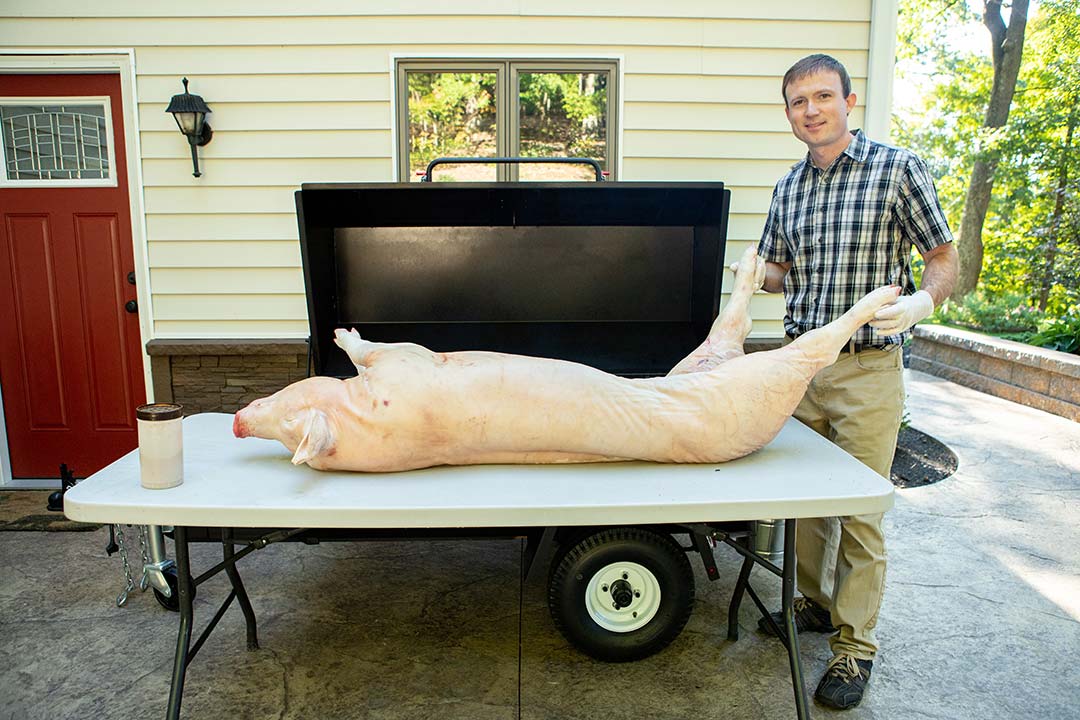
Roasting a whole pig sounds pretty complicated, but it doesn't have to be if you keep it simple and use a roaster, such as the Meadow Creek PR60T Pig Roaster.
The success of your first pig roast depends largely on your equipment and a solid plan. Common mistakes when roasting a whole pig often cause stress and frustration, such as burning the meat, not being able to serve your guests, or picking the pig in the middle of the night. This guide will help you plan a successful pig roast and cook it with confidence.
There are many types of pig roasters in use around the world. Many of them require the use of a rotisserie, securing the pig to a spit so that it doesn't fall into the fire as it cooks and maintaining a variety of moving parts.
A Meadow Creek PR series roaster is so efficient and easy to use that it feels like the lazy way to roast a pig, but why make it more complicated than it should be?
The fire is built in the bottom of the roaster and a removable drip pan between the fire and the meat creates an indirect heat perfect for whole pigs or anything you wish to cook with indirect heat.
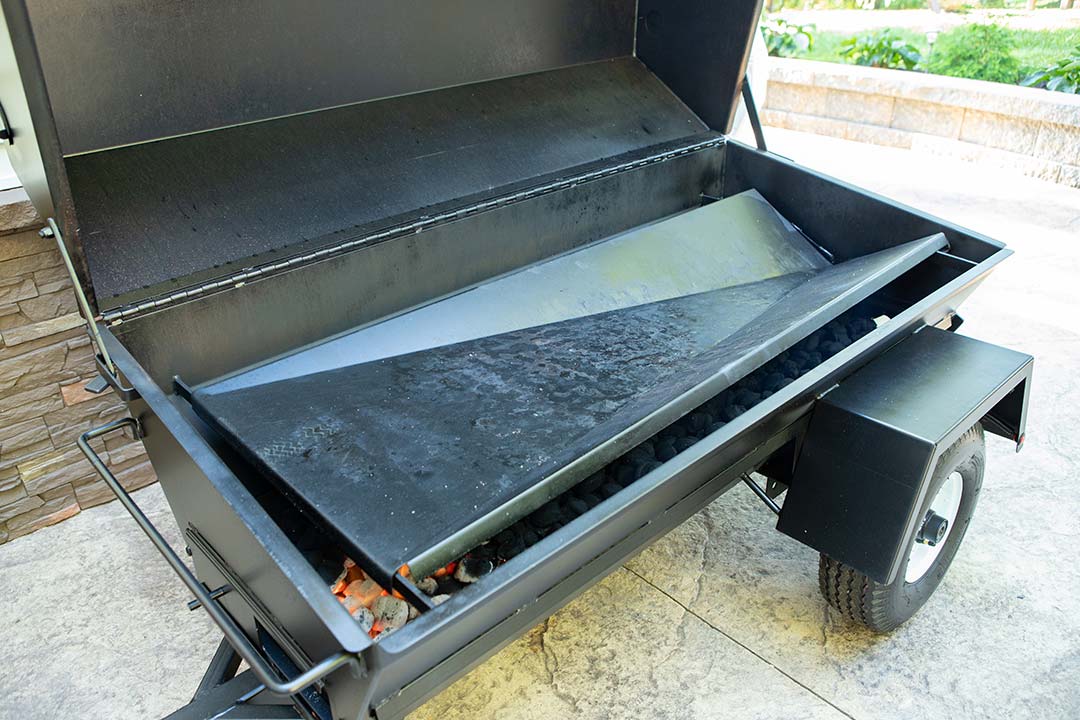
These roasters come in several sizes and are available in charcoal-fired and propane-fired models. The best-selling model is the PR60, which features a 5-foot cooking grate. The PR60T is built on a highway-ready trailer with flush-mount LED lights.
“We used to roast our 100-lb pigs on a homemade rotisserie. It was a 55 gal. drum cut in half with a small motor turning the pig and it was wide open had issues with the dripping grease catching on fire and catching the pig on fire the last time we used it . I said that's it, we are buying a real roaster and I bought this one.
Amazing, awesome roaster. I used charcoal and kept the temperature at 300 with adjusting the air flow and left the lid closed like recommended. 125-lb dressed pig was ready in 7 hrs. It was nice and easy, no stress. Our best pig roast ever. I highly recommend this product."
—Ken Pecore, owner of PR60T
“I have to give this an over-whelming 5 stars! It will give you fantastic results whether you are a professional pig cooker or this is your first. It holds a variety of temps very well so whether you are cooking low and slow hogs, brisket, pork shoulders, whole lamb, or 400° baked potatoes for an army, this cooker will do it. I would buy another and not look elsewhere.
If you join the Meadow Creek Equipment Owners group on Facebook, you also have the luxury of getting real help from real people who are hobbyists and professional caterers alike. Best cooker with best results and versatility (along with the BBQ42) I’ve ever owned (and I’ve owned 23 cookers).
—Gerry Pierick, owner of PR60
We've got many other happy customers. Read some of their stories here:
For your first pig roast, we recommend choosing a pig under 100 pounds dressed weight. A 90-pound (dressed weight) pig is easy to handle and the best way to practice your skills and build your confidence.
For a smaller pig like this, we recommend cooking it at 275 degrees F. Cooking a small pig at a hotter temperature tends to dry out the leaner parts of the pig more than necessary. A 90-pound pig cooking at 275 degrees should cook within 10 hours, so it's practical for starting early one morning and serving it that evening.
Our PR series cookers are ideal for whole pigs and anything else you wish to cook with indirect heat. You can even add a charcoal grilling pan to cook meats with direct heat. Here are some blog posts with photos and examples of what you can cook on this smoker.
The Meadow Creek PR60T is perfect for traveling and cooking on-site and a sweet smoker for backyard or patio use. These PR series cookers are an ideal choice for someone who wishes to cook a wide variety of cuts and also roast whole pigs.
A few things I appreciate about this cooker is the working height, how steady it is to operate, and how fuel efficient it is for the amount of space it has.
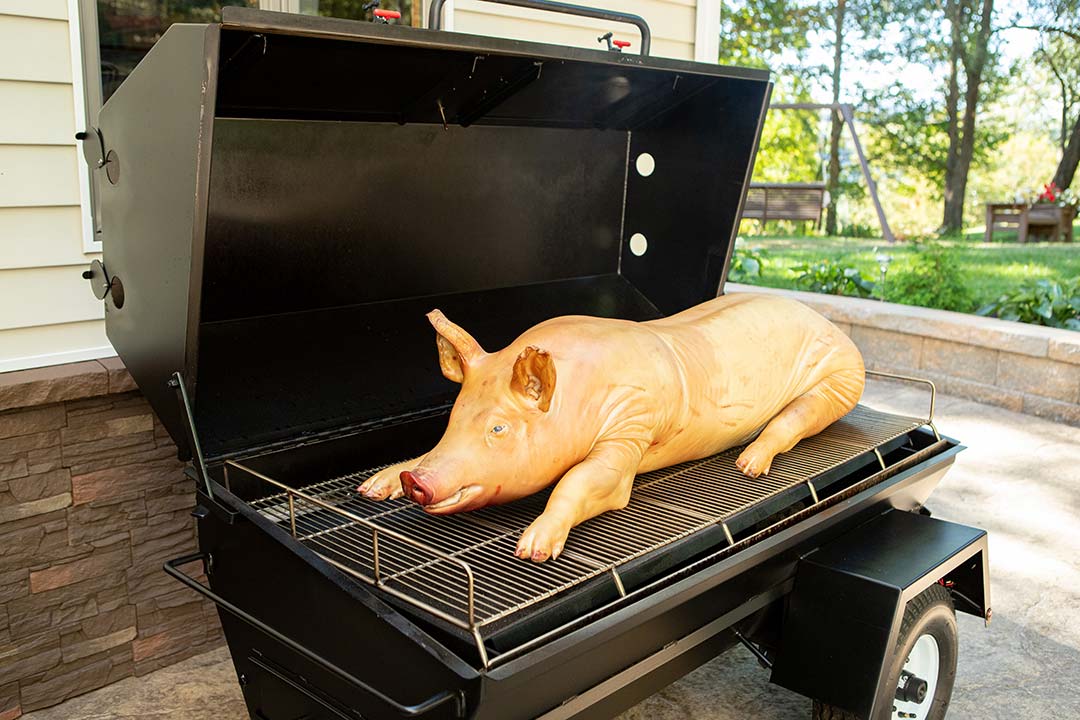
To keep things simple, I'm going to give you my method for roasting a 90-pound (dressed weight) pig. We will also be cooking it belly down with the feet and head attached as shown in the photo above.
There are many other methods of cooking a pig, such as injecting it and cooking it belly-up. My suggestion is to choose a simple approach and make it your goal to cook your first pig. From there, you can always try more complicated recipes and techniques and decide which you like best.
If you can find a local butcher that sells whole pigs, it's pretty easy to get a pig prepared for roasting, but make sure the butcher understands what you want.
The last pig I cooked came with the ears and tail removed, and because I was cooking it for a photoshoot on my patio, the photos of the pig were useless! The main reason for roasting a pig whole is presentation, so don't ruin it by taking for granted the butcher knows what you need.
The PR60 is our best-selling size in the PR series. The smaller PR42 model can hold up to a 90-pound pig and you could also use the larger PR72, our 6-foot roaster. The same fire management principles apply to any of the charcoal models.
Gas models: Consult the owner's manual for firing the propane models and troubleshooting common problems.
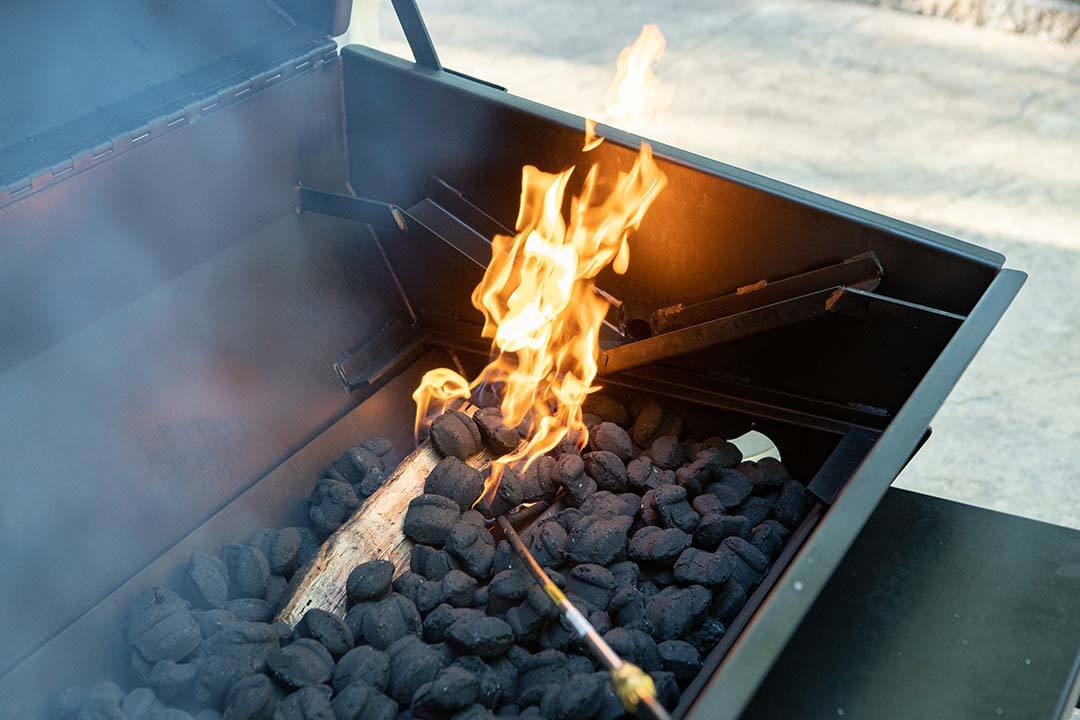
Light the charcoal in both ends with a torch.
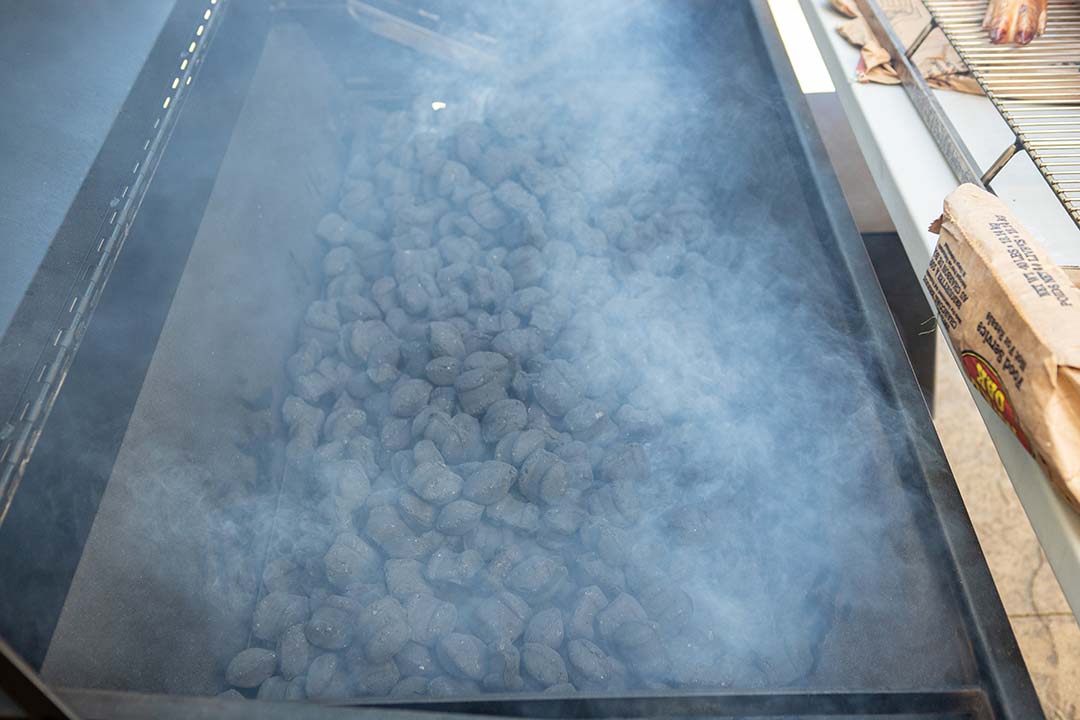
Charcoal lit

The drip pan replaced
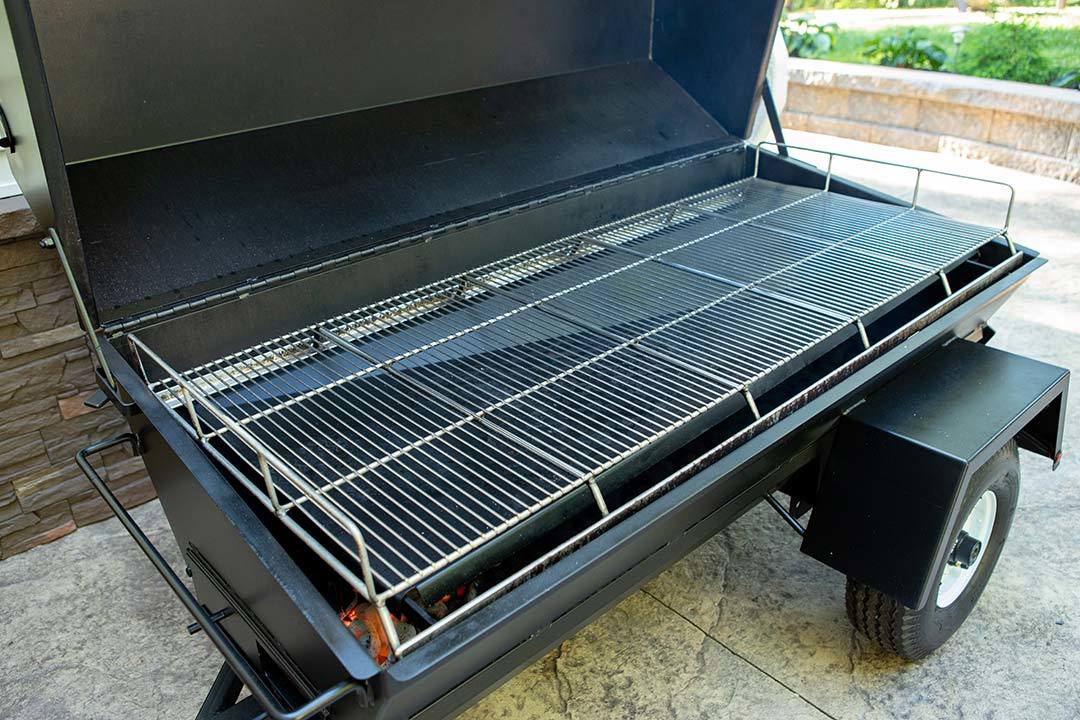
The cooking grate replaced
Running this cooker is generally easy, and if you add enough fuel for the length of your cook, usually you won't need to mess with the fire once it's up and running. However, I highly recommend the optional charcoal pull-out in case you need to stoke the fire or add/remove charcoal or wood.
Using a Flame Boss or Other Temperature Controller: After lighting the charcoal, clip the temperature probe onto the cooking grate and close the lid with the vents open all the way, just as you would when firing it without the Flame Boss. When the roaster gets within 15 degrees of your target temperature, hook up the Flame Boss, and close all the vents. Set the Flame Boss to your target temperature and let the Flame Boss handle it from there. (A Meadow Creek pig roaster requires two Flame Boss fans.)
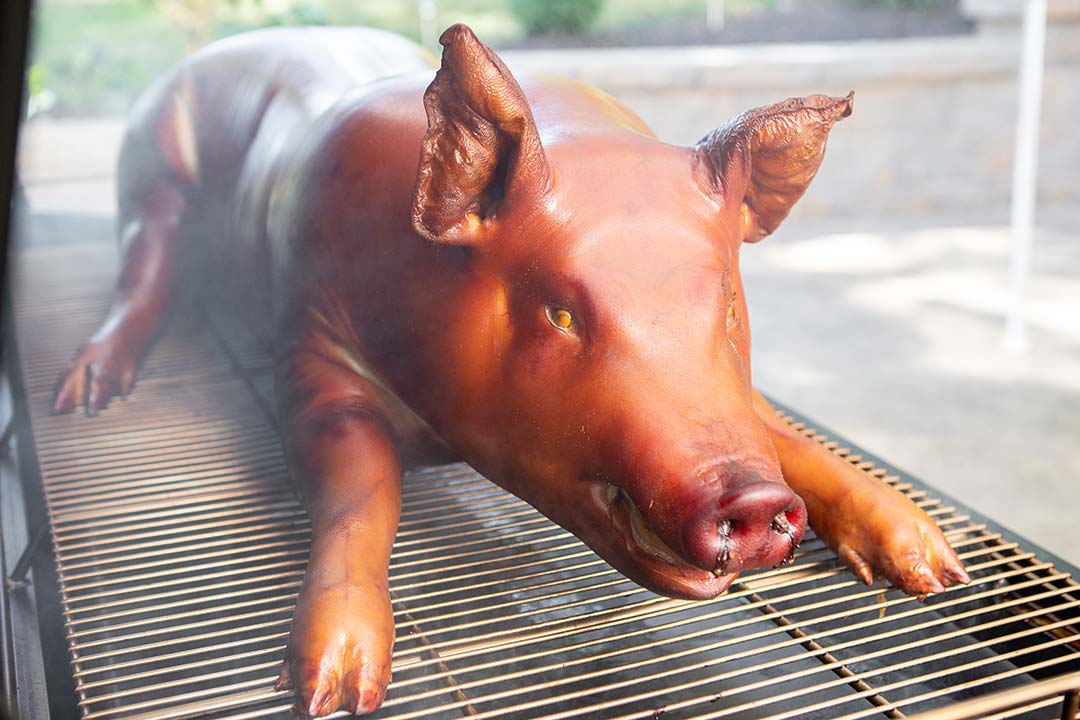
As you can see, it's not difficult to cook a whole pig if you have a Meadow Creek Pig Roaster and a local supplier for pigs. What's more, cooking a whole pig in front of your guests will definitely make a great impression and make you the hero of the party.
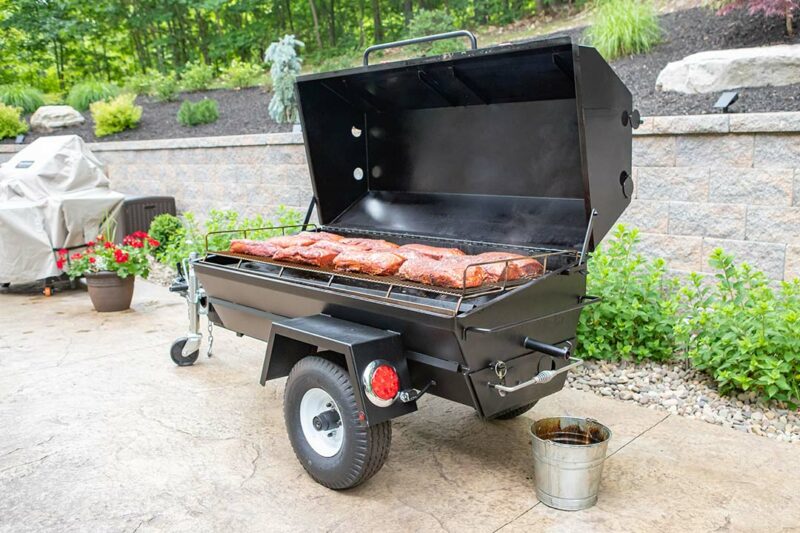
If you’re looking for a versatile charcoal-fired smoker that holds a bunch of meat and is easy to use, check out the PR series. Their design is straightforward and we offer a few upgrades to make them extremely versatile.
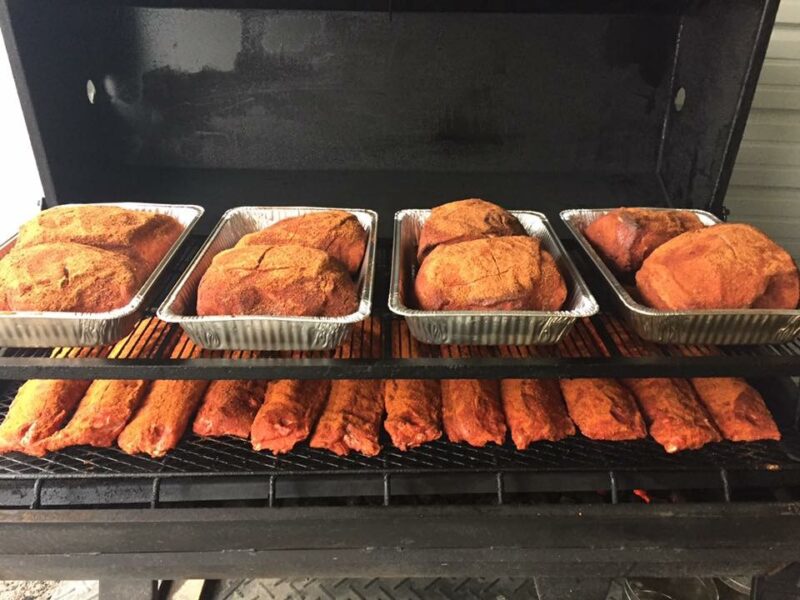
“We have three PR60 and one PR72. We have the second tier racks for all of them. We run from one to all four cookers on a daily basis. You can cook anything on them from a whole hog to vegetables and everything in between.”
—Dave Hunter, owner of PR series cookers
We've got many other happy customers. Read some of their stories here:
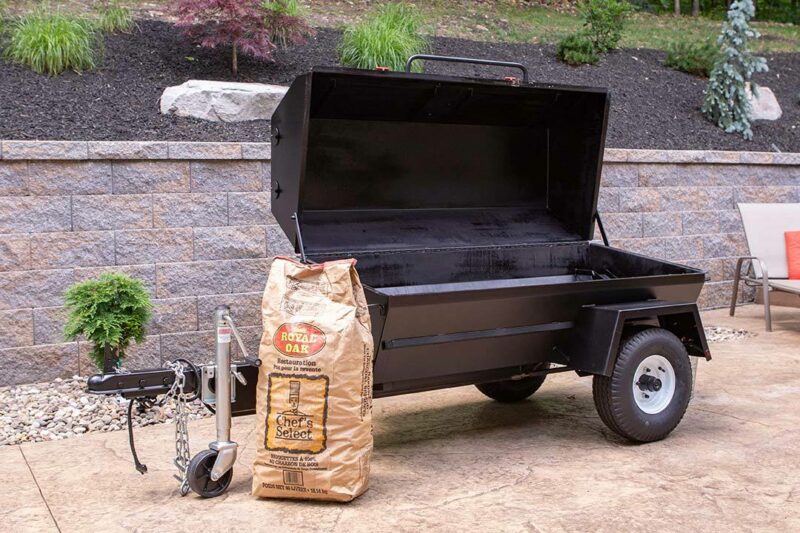
The PR60T is compact enough for backyard use, yet perfect for towing and on-site catering.
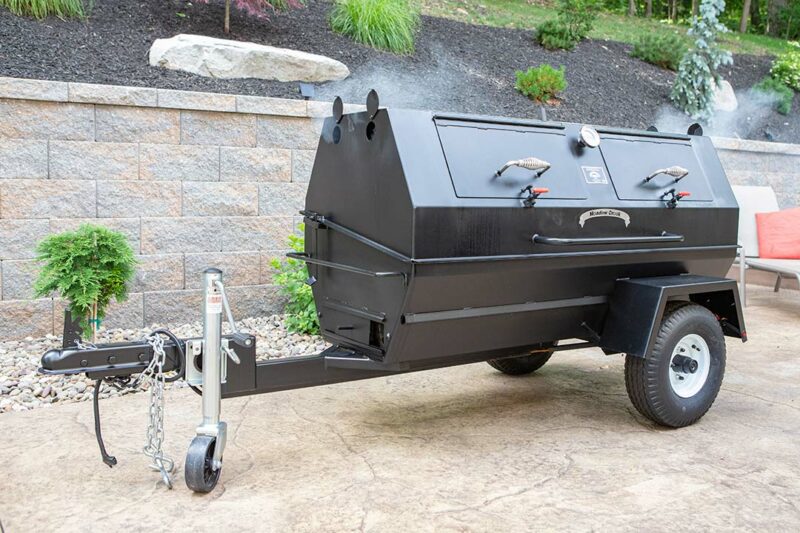
Roasting a whole pig can feel intimidating at first, but if you follow these guidelines, you'll be cooking pigs with confidence in short order.
Browse more photos, features, and specs on our PR series roasters in our online catalog. Choose a model and then click on "Customize" to see available upgrades and suggested retail prices:
Tags
how to roast a pig, pig roasters, pr60t pig roaster
I find when I light both sides, it tends to overheat.
Thanks for your feedback. You should be able to correct that by lighting fewer coals or closing the lid sooner. In other words, it can overheat regardless of how you light it, if you leave the lid open long enough or torch/pre-light enough of the coals.
The PR series pig roasters will never let you down. By far the best roasters in the business.
Gonna fire my pr60 tomorrow and do a couple briskets and rib’s while briskets are resting. My mouth is watering all ready, the PR60 has never let me down. I usually do 3 whole hogs each summer starting on the 4th of July.